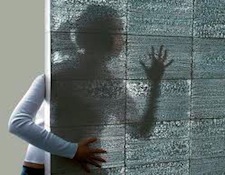It’s the time of year for saving money!

I was looking, the other day, at an article by Jonathan Valin in the May/June 2013 issue of The Absolute Sound and I was pleased and interested to see him say that “…one man’s (or this man’s) “neutral” and “transparent” is another man’s “cold” and “analytical.”
Yeah, ain’t it the truth!
The fact is that, unless the “man” Jonathan was referring to was the engineer who actually recorded whatever it is that’s being played-back, and even then; unless he was using single-point mic’ing (a Telefunken C24, for example, or a Calrec, or even a Blumlein array) and was, himself, sitting right there with the microphone (or hanging over the stage with it, 15 feet above the orchestra for a live classical pickup), he will still have no idea at all what the music really sounded like AT THAT TIME, to that microphone. Or to any particular one of the musicians. Or – if it really was a live classical recording – to anyone sitting in any one of the hundreds or maybe even thousands of different seats in the hall.
Multi-mic’ing makes it worse (it’s even harder to have been at multiple mic points all at the same time), but it doesn’t really change anything basic: Nobody at all; not even the engineer who recorded it has any idea whatsoever what a performance REALLY sounded like – except himself, except at his own position, with his own ears, over the monitor speakers in the control room or the headphones he was monitoring with when he made the recording — and neither of those was the “live” sound of the music!
So what does that mean? It means that it’s all a matter of taste and guesswork: The engineer was guessing about what sounded “right” when he made the recording; the guy who mastered it from the original recording was also guessing; and so was everybody else, all the way down the line. So why shouldn’t you guess, too?
One of the things I’ve noticed in all my years as a Hi-Fi Crazy, and from talking with every audiophile I’ve ever met is that every single one of us says that his only goal is to serve the music and that the way he wants to do that is by reproducing the music just the way it originally sounded, as clearly and naturally as possible. The fact of it, though, is that no one of those people will ever know — and no two will ever agree – what that original sound actually was! That’s why I was so pleased to read Jonathan Valin’s remark (paraphrased, of course) that it’s “all in the ear of the beholder.”
That’s half of it; here’s the other half: That’s the way it SHOULD be.
Let me give you a couple of examples: The first is really quite simple; very soon after I started XLO, I got a phone call from a guy who either was, or had the same name as, a well-known American classical music composer. After introducing himself, he told me that he was looking to buy some new cables for his system; that he had heard that XLO were good: and that he was calling to ask what XLO cables sounded like. “Nothing”, I told him, “they just sound like the music”. “Oh, I’m sure they do” he said, “but what do they sound like? “Like whatever you’re playing, on whatever components you’re playing it on” I said. When he asked, yet again, what the cables sounded like, and I told him that all of XLO’s cables had been designed to have no sound of their own, but to simply pass whatever signal was fed to them without change, addition, or subtraction, and that, to my knowledge, they came closer to that ideal than anything else on the market, he thanked me, and told me that that wasn’t what he wanted. “‘Butterscotch-sounding’ is what I’m looking for,” he said “Do you know of any other cables that are ‘butterscotch-sounding’?” I told him that I didn’t; thanked him for his call; and got off the line, thinking, at the time, that he was out of his mind” (which is, of course, why I’m not mentioning his name.) How, I wondered, afterwards, could he possibly want something that he KNEW would color the sound?

The other example has to do with the “Sheffield/XLO Test and Burn-In Disc”. One track on that disc (recorded, incidentally, with a single Telefunken C24) had me and world-famous mastering engineer Doug Sax wandering around in a large, mostly empty room, describing our positions relative to the mic, the room, and each other. Because the room was mostly bare walls, and acoustically very “hard” there was a lot of echo, including “slap” echo, which tended to shift the perceived frequency spectrum upward and made our voices sound “brighter” than they actually were.
If you have that recording and don’t like the sound, and have tone controls or EQ available and want to change it to something you like better, GO FOR IT! Make it “butterscotch – sounding” if you’d like!
What I’ve finally learned after all this time is that our hobby is a hobby, and that none of us will ever know what reality really sounds like; so, now that you’ve spent your money, go ahead and have your fun. Set your system up to sound however you think it ought to. That’s the only reality that matters. Truly, your guess is as good as anyone else’s, so GO FOR IT and ENJOY!





